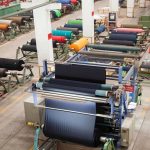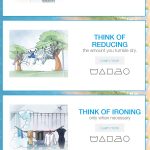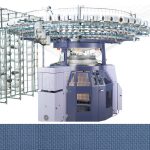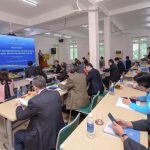ITMF’s International Production Cost Comparison (IPCC) is designed to trace the implications of the growing capital intensity in the primary textile industry. This publication describes manufacturing and total costs of yarn/fabric broken down into various cost elements at different stages of the textile value chain. The 2018 edition adds the segment “Finishing” to the historical cost analysis in spinning, draw texturing, weaving, and knitting. For the first time also, the geographic coverage counts Pakistan and Bangladesh besides Brazil, China, Egypt, India, Indonesia, Italy, Korea, Rep., Turkey, U.S.A., and Vietnam.
The goal of the report is to allow for a better appreciation of the relative importance of the cost elements and their respective influence on the total costs. In the category Spinning Ring/NE30 for example, the report shows that countries with high manufacturing cost (i.e., in USD/kg of yarn, Italy = 2.35, Korea = 1.60, U.S.A. = 1.54) also have the higher share of labor cost (respectively 33%, 27%, and 31%). The share of power in two of these countries, however, equals the sample average. It reaches 21% in Italy and Korea and 10% in the U.S.A., a level comparable to that measured in Egypt.
Figure 1: Selected Tables from IPCC-2018
Manufacturing Cost 2018: Spinning Ring/NE30 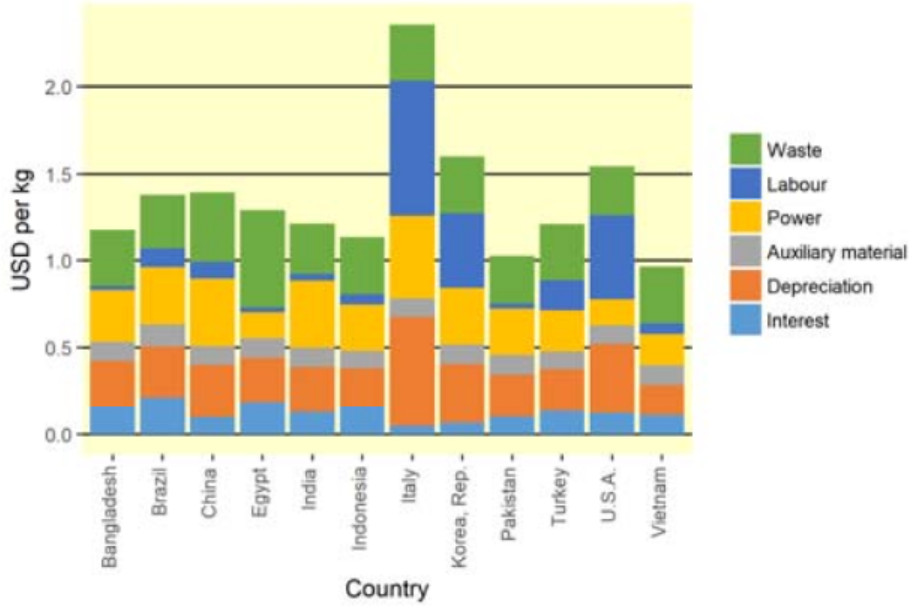
Manufacturing Cost 2018: Weaving Ring Yarn Fabric
Manufacturing Cost 2018: Knitting Ring Yarn Fabric
Manufacturing Cost 2018: Finishing – Woven – Continuous Open Width
